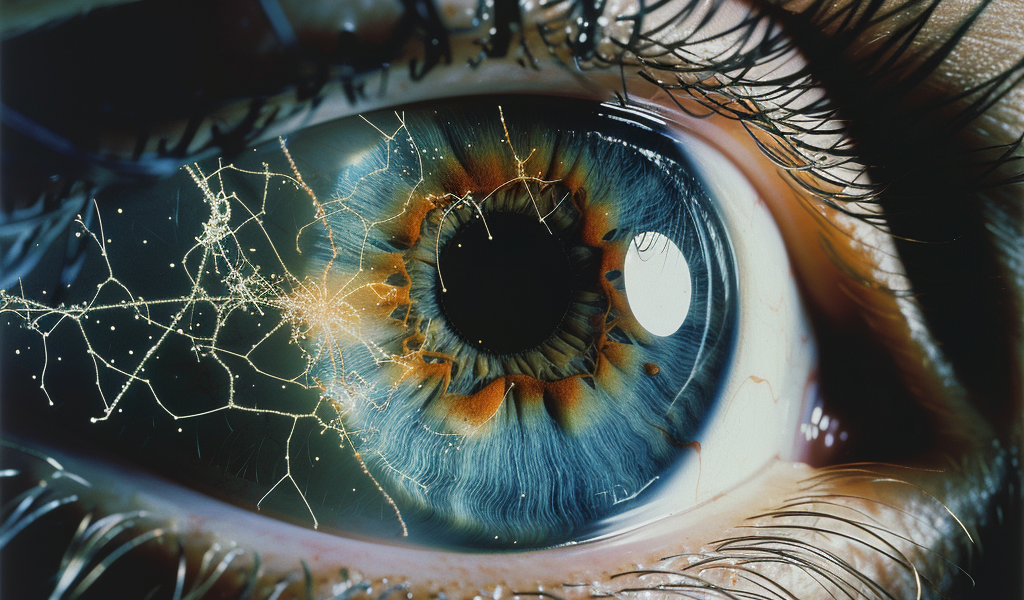The intricate relationship between our eyesight and brain health has garnered significant attention in recent years. A recent study conducted in Norfolk, England, has unveiled a startling revelation: the ability to predict dementia up to 12 years before a formal diagnosis may lie in our visual sensitivity. This groundbreaking research highlights the potential for early intervention and understanding of cognitive decline.
The study, which followed 8,623 healthy individuals over a substantial period, found that by the end of the research, 537 participants had developed dementia. This provided a unique opportunity to analyze the factors that could have indicated the onset of this debilitating condition.
At the onset of the study, participants underwent a visual sensitivity assessment. This test required them to press a button upon detecting a triangle emerging from a field of moving dots. The results were telling: individuals who later developed dementia exhibited a slower response to the visual stimulus compared to those who remained cognitively healthy.
But what accounts for this connection between visual sensitivity and cognitive decline? Researchers suggest that visual impairments may serve as an early indicator of Alzheimer’s disease, potentially due to the toxic amyloid plaques that are characteristic of the condition. These plaques may initially impact areas of the brain responsible for vision before affecting memory-related regions as the disease progresses. Consequently, visual tests may reveal deficits prior to traditional memory assessments.
Furthermore, the study indicates that other visual processing aspects are compromised in individuals with Alzheimer’s. For instance, contrast sensitivity—the ability to discern the outlines of objects—and the capacity to differentiate between certain colors, particularly in the blue-green spectrum, are often affected early in the course of dementia. These visual challenges can significantly impact daily life, often without individuals being fully aware of their implications.
Another fascinating finding pertains to eye movement control. Early signs of Alzheimer’s may include deficits in inhibitory control, which refers to the ability to ignore distracting stimuli. Individuals with dementia often struggle to disregard distractions, leading to potential issues with eye movement control. This aspect of cognitive decline raises concerns about driving safety, a topic currently under investigation by researchers at Loughborough University.
Moreover, the study sheds light on how individuals with dementia process faces. Evidence suggests that they may not follow the typical pattern of scanning a person’s face, which usually progresses from the eyes to the nose and then to the mouth. This scanning behavior is crucial for imprinting a face and aiding in memory retention. Interestingly, caregivers and medical professionals often notice this deviation in behavior, sometimes recognizing the signs of dementia upon first meeting a patient.
Individuals with dementia may appear disoriented, as they do not actively engage their eyes to scan their surroundings. This lack of purposeful eye movement can lead to challenges in social interactions and recognition, further complicating the lives of those affected by cognitive decline.
The implications of this research are profound, suggesting that visual tests could serve as a valuable tool in the early detection of dementia. By identifying visual sensitivity deficits, healthcare providers may be able to implement preventative measures or interventions long before the onset of more noticeable cognitive symptoms.
This study not only emphasizes the importance of eye health but also highlights the interconnectedness of our sensory systems and cognitive functions. As research continues to evolve, there is hope that these early indicators of dementia can lead to better outcomes for individuals at risk.
In conclusion, the findings from this study underscore the need for increased awareness regarding the potential signs of cognitive decline. By paying attention to changes in visual sensitivity and processing, individuals and healthcare professionals may be better equipped to address and manage the early stages of dementia.





